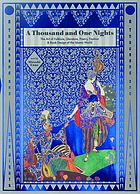Photopoetry and the Problem of Translation in FitzGerald’s Rubáiyát. Michael Nott.
Victorian Studies, 58 (2016), 4, pp. 661-695.
In the early twentieth century, two photographers produced illustrated editions of Edward FitzGerald’s Rubáiyát of Omar Khayyám (1859). This essay examines the photographs of Mabel Eardley-Wilmot and Adelaide Hanscom Leeson, and explores how the Rubáiyát, while not an Orientalist poem, prompted Orientalist responses in photography. Eardley-Wilmot and Hanscom Leeson’s photobooks are early examples of photopoetry, a neglected art form in which combinations of poems and photographs create illustrative, evocative, and symbiotic relationships between text and image. Given FitzGerald’s own interest in photographic culture and the poem’s concerns with literal and metaphorical truths, the Rubáiyát illuminates practices of understanding and translating other cultures in the Victorian period.
